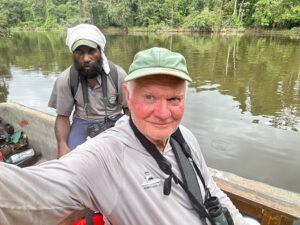About John Kyngdon - Wild World
A surgeon turned traveller and wildlife photographer, exploring where medicine, art and the natural world converge

Surgeon, Traveller, Wildlife Photographer
After decades in surgery, I found a second calling behind the camera — one that rekindled my curiosity and sense of discovery. The discipline and precision of medicine gave way to the patience and wonder of wildlife photography, yet the underlying pursuit remained the same: to observe, understand, and honour life in all its forms.
My journeys have taken me from the Southern Ocean to the equatorial forests of Borneo, from seabird colonies in the Falklands to quiet riverbanks in New Zealand. Each encounter — whether with a marlin breaking the surface or a kingfisher poised mid-flight — reminds me that nature is both fragile and fierce, fleeting and eternal.
Through my lens and writing, I try to bridge those worlds — of science and art, structure and spontaneity — and to share the beauty, humour, and resilience that define both the wild and the human spirit.
